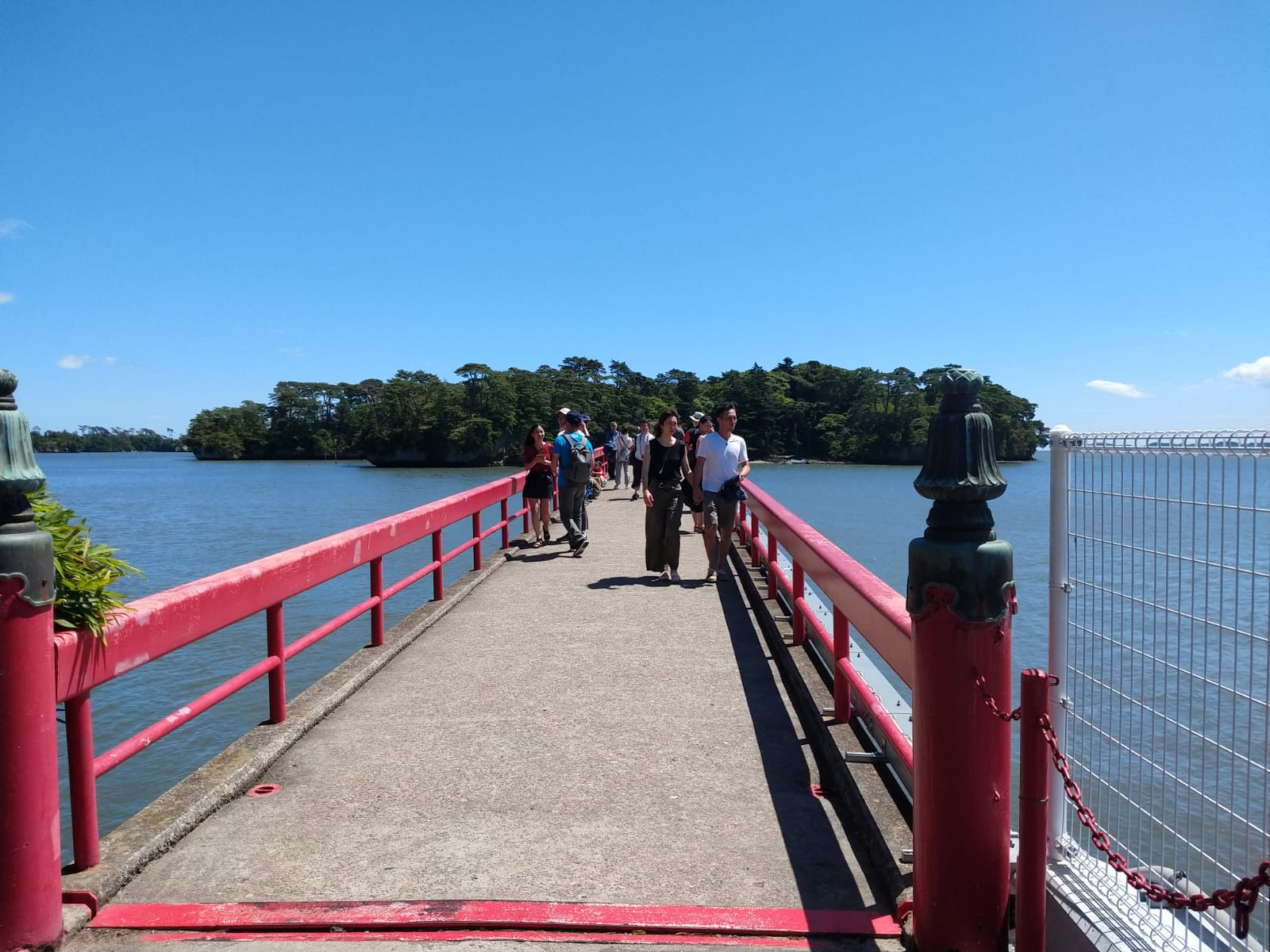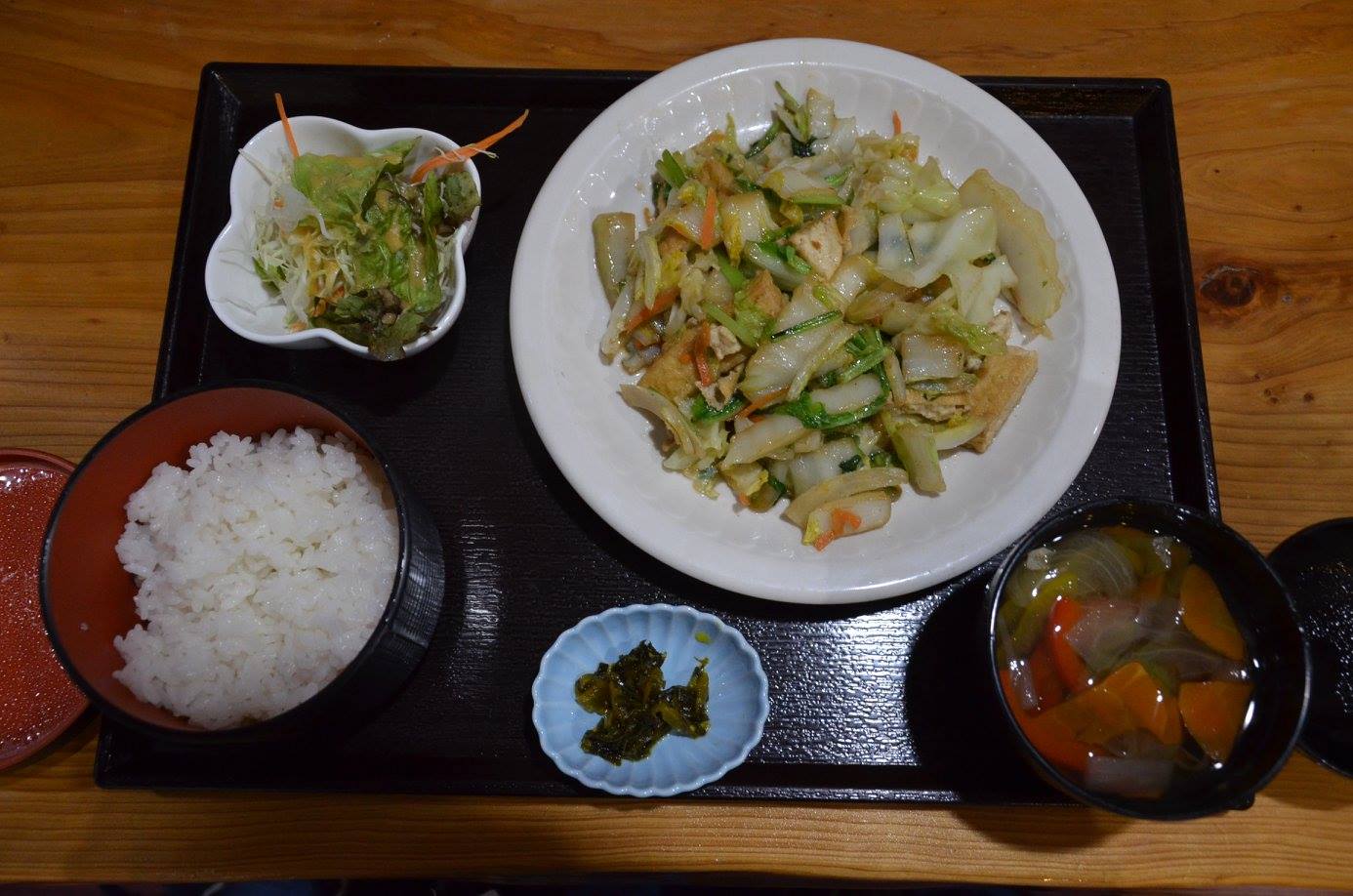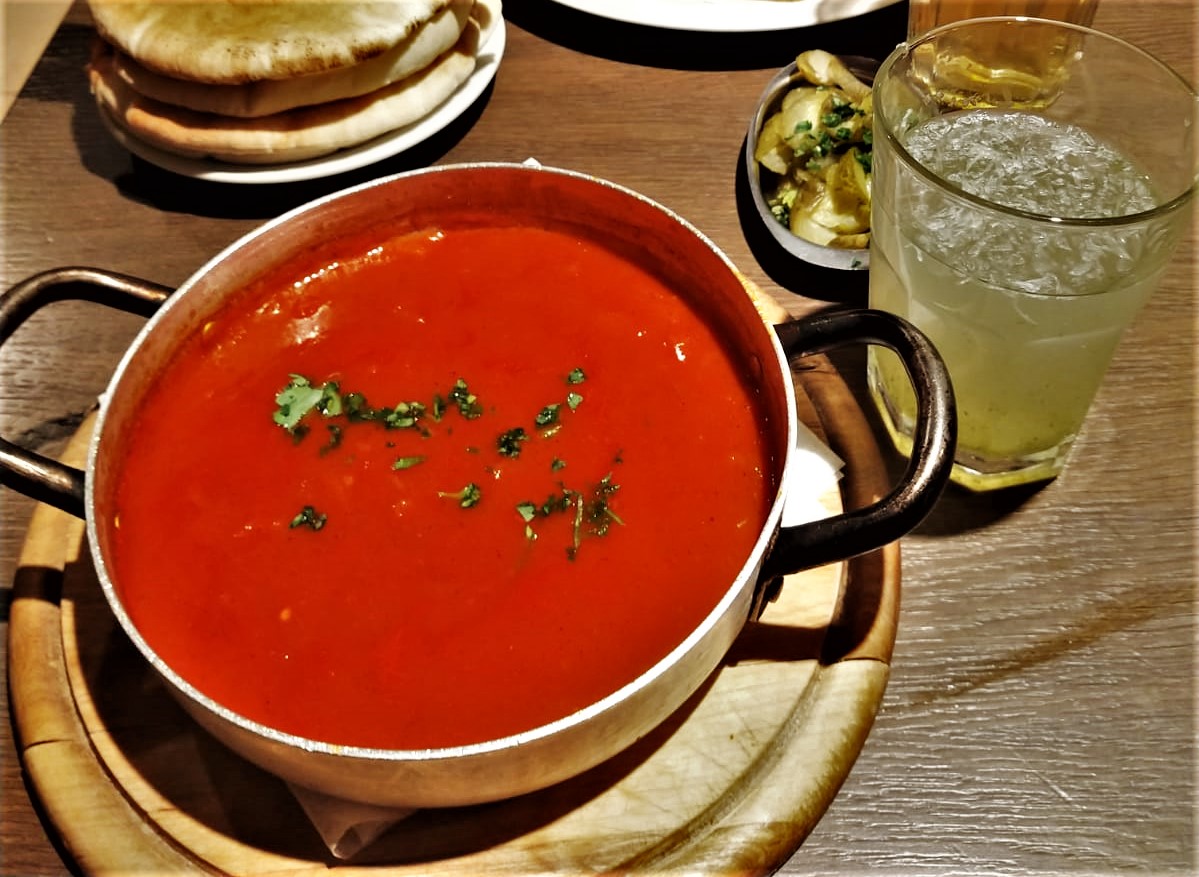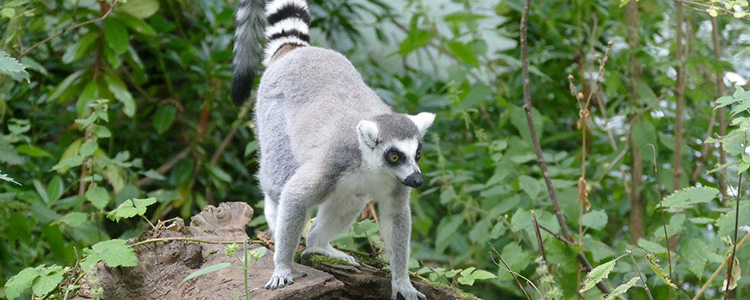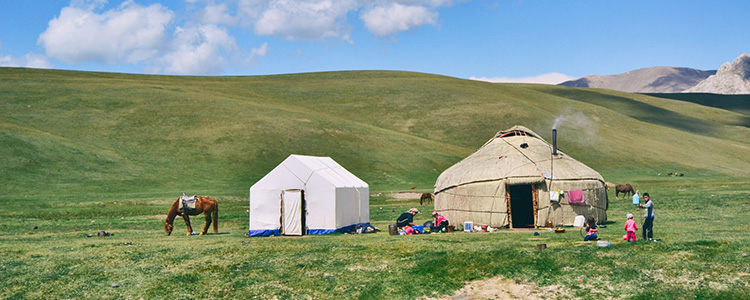Japan Country Bundle: suggestions, stories and tips
Content about Japan on WorldSupporter
 Why live in Japan, why emigrate to Japan or stay for a long time?
Why live in Japan, why emigrate to Japan or stay for a long time?
Why should you live in Japan as an expat, emigrant or working nomad?
- Because it is really something different.
- Because it is safe in Japan and there is a high quality of life. The cities are clean, public transportation is efficient and reliable, and health care is excellent.
- Because the work culture is collective, and the common interest of the team is high on the list.
- Because the work culture is known for high standards and efficiency.
What should you pay attention to?
- if you meet someone for business, or are given someone's business card? Then never accept it with one hand, but always use both hands. By the way, this also applies to cards and money. Also, never put the card in your pocket right away. Look at it and store it respectfully.
- in your daily interactions with others, especially colleagues, in the workplace or relative strangers, it is helpful to have an idea of the form of politeness in the Japanese language. For example, address others by last name+“san,” this shows respect, and do not ask direct or personal questions if you do not yet know each other well.
- that emotions or problems are not easily talked about because it feels like bothering others. So it can also be difficult to make deep friendships. Hugging is rare and most contact is through bowing. Shaking hands is also out of the question. Still, the contact can be warm and fun, and of course it varies depending on the person you meet.
- in many cases, the common thread is consideration for others and mutual respect. In Japan, you almost never communicate “no.” If you can't or won't, you often indicate it in a roundabout way by saying “maybe,” for example, so that you don't offend another person. The message is understood.
- dealing with each other is formal, for example, communication, dress code and etiquette.
- overtime is not uncommon. The work culture can be demanding, and balancing work and leisure time can be challenging.
- arrive on time, adapt to group dynamics, make sure your home is clean and orderly, be very hospitable (hospitality is hugely important in Japan, and also a lot of fun to experience), respect the elderly and go “out of your way” to help them and others.
- individualism is not always appreciated.
 Why study in Japan, do an internship, do volunteer work or look for a job in Japan?
Why study in Japan, do an internship, do volunteer work or look for a job in Japan?
Why study, do an internship, volunteer or work temporarily in Japan?
- because it is a good way to get in touch with the rich history and culture, with the mix of traditional and modern elements in Japanese society.
- because the workplace is a place where group spirit is important. Employees should help each other. Team outings are popular, and usually with food.
- because the work culture has a clear hierarchy; it is clear that the employer has the say.
What should you pay attention to?
- that there are many cultural customs, which are often difficult to recognize or figure out. Some important customs are bowing to each other when greeting, when leaving. The deeper the more respect and it is not uncommon to bow several times in a row.
- respect for higher-ups is very important.
- decisions are often made by those in charge, without (much) input from the lower ranks.
- it is customary to bring a little something with you when you visit someone in Japan. Consider something from home, an expensive piece of fruit, or an (edible) souvenir from another region of Japan.
 Which visum for Japan
Which visum for Japan
- In need of a Japanese visum?
- The first place to visit is the embassy's/government's website
- Here you can find experiences and advice regarding Japanese visa
Are you going to Japan some time soon? Maybe for work, travelling or volunteering? Than you might need to get a visum. In this bundle you can find advice and experiences regarding the Japanese visum process.
 Recipes from Japan or with a Japanese twist by WorldSupporters - Bundle
Recipes from Japan or with a Japanese twist by WorldSupporters - Bundle
Recipes from Japan shared by WorldSupporters
 What are typical Asian habits, food customs and Asian philosophies?
What are typical Asian habits, food customs and Asian philosophies?
Why this blog about habits and philosophies in Asia
I love Asia. I feel at home in Asia. I am half chinese and half dutch. I feel more at ease in filipino culture than chinese culture. I have a good friend from Japan. Throughout the years, I have tried to be open to everything Asia has to offer. To embrace Asia in my being, in my core and to understand and learn more of this continent in the world. Some of the things that really caught me... Any Asian habits that particulary interest you?
What are the habits in China?
- Don't scoop food in your bowl for yourself, but wait for your host or hostess to do so.
- It is impolite to eat everything in your bowl; leave a small amount as a sign of respect.
- Slurping while eating is not rude in China, but rather a sign that you like the food. Let's slurp.
- Never refuse an offer to have some food or drinks.
- Red is the color of happiness, do not wear it at funerals.
- When you have tea, make sure the teapot points at the other tables, not at a person on your table, that doesn't bring luck.
- Squat toilets, yes they are still widely used all over China.
- Public spitting is still a habit for some people.
- Drinking hot water is normal and considered healthy.
- Early rising is a habit for many chinese people and to practice tai chi.
What are the habits in Indonesia?
- Gotong royong is the spirit of communal cooperation and mutual assistance. It's a deeply ingrained value in Indonesian society and is often seen in neighborhood clean-up efforts or helping neighbors in need.
- When having a meal together it is customary to wait for the host to start eating before you dig in. It is also considered impolite to refuse food that is offered to you. If you are full, you can take a small portion and say thank you.
- Eating together is a time for families and friends to connect and socialize. Rice is a staple food in Indonesia and is usually eaten with every meal without rice it is not considered a meal. It's not uncommon for Indonesians to eat with their hands.
- Life Cycle Ceremonies happen around various stages of life. Tedak Siten, a Javanese ceremony, celebrates a baby's first steps. Metatah, a Balinese ritual, involves the filing of a child's teeth to mark their passage into adulthood.
- Batik - is an Indonesian fabric with cultural significance. Different patterns have different meanings and are worn for different occasions.
What are the habits in Japan?
- Cultural customs: Instead of shaking hands, people in Japan bow. The deeper, the more respectful. Respect for elders and superiors is deeply rooted in Japanese culture. Kawaii means “cute” and is an important part of Japanese culture, especially among young people.
- Social norms & mutual communication: Everything is about respect and harmony. Order, punctuality and cleanliness are key words. There are a number of expressions for this. Kurashi - means “way of life” or “the ideal way to spend our time,” but like many words that get lost in translation, it means more than that. If you have not yet tidied up according to the KonMari Method, focusing on your kurashi will motivate you to start. Kirei - is an activity. You look at all your possessions and decide what you want to keep and what can go. It is an emotional literal clearing and cleaning activity. By cleaning up, you reflect on your past and future.
- Etiquettes & traditions: Onsen are public Japanese baths, there are many rules how to bathe. Like about chanoyu, the Japanese tea ceremony, is full of traditions and etiquettes. It is an art form, a very formal event where every movement and action has a meaning. It is about creating a moment of calm and harmony.
- Eating and drinking habits: Eating with chopsticks is the standard way of eating. There are several etiquette rules associated with using chopsticks. The most important are that you never place your chopsticks upright in the rice (similar to incense sticks at a funeral), or pass things from chopstick to chopstick. This happens at funerals and not in everyday life. In addition, eating on the street or public transportation is not-done among locals. Ramen you may slurp, but don't burp! Fish is often eaten first, and then the rice. If you go to an “izakaya” with friends or colleagues, you often share dishes. Here it is customary to use the back of your chopsticks to place the food from the plates on your own plate, or you use clean chopsticks.
- Bonsai - Japanese people recreate nature in miniature, this specific horticulture is called bonsai.
- Hogejagu - The Japanse art of letting go.
- Ikigai - What is worth living? What is it worth coming out of bed for? What drives you? What inspires you?
- Kintsugi (golden joinery) - is the Japanese art of repairing broken pottery with lacquer dusted or mixed with powdered gold, silver, or platinum, As a philosophy, it treats breakage and repair as part of the history of an object, rather than something to disguise. You can buy Kintsugi kits in the Netherlands, it is in my opinion a very nice way to glue broken things, with golden glue.
- Kirei - is an activity. You look at all your possessions and decide what you want to keep and what can go away. It is an emotional literal clean-up and clean-up action. By cleaning up, you reflect on your past and future.
- Kurashi - translates to “way of life” or “the ideal way of spending our time,” but like many words lost in translation, it means more than that. If you haven’t tidied using the KonMari Method, focusing on your kurashi will motivate you to start.
- Mottainai - (もったいない or 勿体無い) It is a term of Japanese origin that has been used by environmentalists. The term in Japanese conveys a sense of regret over waste; the exclamation "Mottainai!" can translate as "What a waste!" Mottainai is the feeling of sadness you have when something hasn't reached its full potential. Recycle and repair. It's all about the love you have for your old stuff.
- O-hanami - In april are the cherry blossom viewing parties.
- Omikuji - These are slips of paper that tell your fortune, divided into kichi (good luck) and kyo (bad luck). Depending on the shrine there are various grades of good and bad luck in between. One theory says if you read it without showing anyone else and then tie it to the branch of a tree in the shrine grounds before going home, even bad luck is converted into good luck.
- Omoiyari - Omoi is thinking, memories and emotion. Yaru is doing. It is empathy, freely translated, it is on the other hand more ordinary and special. It's just because it's part of everyday life in Japan, not just an empathetic reaction. It is special because it makes compassion a part of the community. How do you master omoi? Start with yourself, focus inwards. If you recognize and understand your own feelings, you can translate that into compassion for others. The essence of omoiyari is that you are aware, of other people in life. You behave in a way that is pleasant for others.
- Shintoism - Shinto is the early religion of Japan. It is a combination of two chinese characters, which means: "The way of the gods." In Shintoism the Kami are being worshipped. Kami are gods of nature. Some kami are bound to be found in certain places, others are united with bigger objects and phenomena. Amaterasu is for example the god of the sun. Marie Kondo the "spark-joy guru of tidying" and her method, the KonMari method, is based on Shintoism. Keeping the house tidy is part of the practice.
- Shinrin-yoku - I have sent my japanese friend once a photo of me snow bathing (in a bathing suit swimming in the snow) and asked her the japanese term for snow bathing. There is no japanese term for it. And I thought there was! The Japanese have a term for forest bathing: Shinrin-yoku. To be in the forest with the trees, will make sure you will be re-energized and that you can feel your own core.
- Sumo, Judo and Karate
- Tea ceremony - The aim of the tea ceremony (in a small space) is to reduce daily life to the barest essentials and idealize form. Behind this idea is to intensify the brief time spent together as a moment to be cherished. Tea utensils, the preparation of tea and the tea ceremony etiquette is all very important. When you will experience a true tea ceremony it is advised to prepare yourself to understand more beforehand of this Japanese ceremony.
- Tenei- It is about patience and respect of the daily things. Try to find harmony in the day to day activities, to be correct and punctual towards others and to be persistent of the things which are important to you, even when it is not easy.
- Tokimeki - As explained by the latest Marie Kondo on Netflix or in her book, do what you like and what you think is important in your life…
- Tsukumogami - According to Shinto animism, some inanimate objects could gain a soul after 100 years of service, a concept know as tsukumogami.
- Omiyage and Temiyage - Omiyage and Temiyage are Japanese names for two kinds of gifts. Omiyage are souvenirs you bring home from a trip. Temiyage are thank-you gifts you bring when you visit someone. Japanese people have the habit of buying plenty of gifts for their friends. As a foreigner it is appreciated when you bring Omiyage and Temiyage.
- Wabisabi 侘 寂 - A lot of things around me are Wabisabi, especially when you try to use things as long as possible. And when you are open to see things in the light they are, and not everything has to be perfect around you. Life in it's imperfection.
- Zakka - is to be grateful for the normal, simple things that make life special. For example your favorite sweater of coffee cup.
What are the habits in Laos?
- Cultural habits: Lao people generally prioritize balance and well-being over material possessions. Lao people are known for their patience and laid-back attitude. Stress in uncommon. This is reflected in their daily lives and business interactions.
- Boh penyang means "never mind". It is a way of life and considers the slow pace the best.
- Social habits & communication: Wai - This is a traditional greeting where people press their palms together in front of their chest and slightly bow their head. The higher the hands, the more respect shown.
- Sabai-dee- A common greeting that translates to "Are you well?" This reflects the Laotian emphasis on well-being and politeness.
- Showing anger or disappointment in public is inappropriate. It causes everyone to lose face, better to keep smiling and keep your voice low, speak softly.
- Pointing and gesturing with hands is frowned upon.
- Lao people are not big on waiting in line. They often push and shove to get to the head of the line.
- Etiquettes & traditions: Spirit worship - Alongside Buddhism, many Lao people also believe in spirits and engage in traditional rituals to honor them.
- Women should avoid touching a monk, the robes and not sit besides a monk. Almsgiving can be done directly in the bowl, not handed directly to the monk.
- Never point your feet or soles towards people, a buddha, a temple or statues. That is considered disrespecfull.
- Eating & drinking habits: Lao people eat with spoon and fork, not with chopsticks. It is common to sit on the floor while eating.
What are the habits in Mongolia?
- There are certain habits in the ger, the yurt.
- Sleep - Always sleep with your feet facing the door, never toward the altar.
- Whistling - Whistling in a ger is considered rude.
- Be aware that fire is sacred to Mongolians. Do not throw garbage into the fire.
- Elders - Always let elders lead the way and do not sit with your back or feet to the altar.
- Hospitality - When you are offered food or drink, accept it, even if it is just a little. Use your right hand, with your left hand for support. It is customary to give small gifts to your hosts, such as fruit, candy or alcohol.
- Holding a cup - Hold a cup underneath, not by the rim.
- Say no in an indirect way, that is polite.
- Tsagaan Sar - From late January to mid-February, Mongolians celebrate the New Year. It is the most joyous occasion for the country's nomadic herders because Tsagaan Sar marks the arrival of spring after the long and harsh winter in which hundreds of their animals can freeze to death. Tsagaan Sar has been celebrated for more than 2,000 years. The festival is essentially intertwined with numerous deeply symbolic rituals. The festival is celebrated throughout the country and is still a holiday that Mongolians most look forward to with renewed hope for happiness and prosperity. Around the New Year, families burn candles at the altar, symbolizing Buddhist enlightenment. Mongolians also visit their friends and relatives (at the home of the eldest in the family) on this day and exchange gifts. Many people dress in full Mongolian national costumes.
What are the habits in the Philippines?
- Use of 'face' in communication - Briefly raise eyebrows to confirm or to mean yes to a question and also used as a brief greeting (all silent).
- Indicating direction by pursing lips and turning head in direction, all silent as well.
- Baon - refers to the monetary allowance or food normally provided by the parent to a child who goes to school.
- Bayanihan - When a house is broken, the whole community helps fixing the house. You might have seen the pictures of a group of people carrying a hut, when it needs to be transferred. It is a true community spirit. You talk, you help and protect the people around you. It is team effort, only possible when done with a group. It is truly a beautiful thing.
- Cockfighting is a popular national sport in big and small arenas all over the country. Goal is to gamble (win money) and eat the roosters who lost the game.
- Finding your spot - Recently I was back in the Philippines, taking public transportation. When you would like to take your window seat, be reminded you have to climb over other peoples lap. Squeeze in between the seat in front of you and the seat with the passenger on it. Enough space, a little intimate but do-able, it has something about it.
- Pacquiao - Filipinos adore boxer (and politician) Manny 'Pagman' Pacquiao.
- Pagmamano - Children take your hand, put it on their forehead, as a way of greeting you. It is an act of respect. The child says mamo po, can I have your hand please? Most of the time, they say God bless (you), when put on their forehead.
- Pasalubong -In the Philippines it is common when you have been on a trip, that you bring a token of love back to the people who stayed home. It is a filipino tradition of travellers bringing gifts from their destination to people back home. It can be anything, something to eat or to drink is always a welcoming gift, since filipinos love eating! It is actually not about what you bring, it is something that you have brought, so the other person knows you thought about them while away. The first time, I heard bring pasalubong, from multiple people, and didnt know how to act. When you see souvenir stores in the Philippines, it has the sign pasalubong. So now you are prepared.... just bring something back...
- Noise and music - Filipinos are crazy about high volumes and karaoke (called videoke) and music from the 70s like The Carpenters. There was one big world hit: Anak by Freddie Aguilar in 1978.
- Remedio - Is fixing things, even though you dont know how to fix it. The filipinos use remedio. Remedio used to drive me crazy. It is fixing things with what you have, in a creative way, and if it works again... that will be clear in the near future. You have to be flexible to embrace remedio.
- Squeeze - Squeeze your but, in the jeepney, also when you think it is already full. There will be place, when you squeeze. When you are for example sitting at the window in an airplane and you have two filipinos beside you, you squeeze your body in and out going to the aile. It is not a habit to stand up, when you can squeeze, when used to it, it works perfectly fine.
- Volume - Pump up the jam, pump up the volume. Filipinos love loud music, loud talking, as long as it is lively. The high amounts of volume makes you feel festive and alive, even when there is not a party.
- 'Whitening' products such as soap, make-up, deodorant are very popular, to stimulate white skin.
What are the habits in South Korea?
- In South Korea, and other places I have seen it in Asia, they brush their teeth, three times a day after a meal. People bring portable toothbrushes and you often see people brushing their teeth in the washroom in their office.
- Family is everything and the eldest son carries the responsibility of the family.
- Kimchi is a national dish. People make kimchi at home. In the supermarkets a lot of dark bordeau red buckets can be found, so you don't see the stains of the herbs going to be fermented with the vegetables.
- I personally love banchan. When you order Korean food it is likely you get a lot of different small bowls, (most of the time vegetarian) side dishes. For me as a dutch person, I can do without the maindish, since banchan is so delicious.
What are the habits in Taiwan?
- Politeness - Taiwanese people are very polite and respectful. It is customary to bow when greeting someone and to say “thank you” and “please.”
- Respectfulness - Taking off shoes when entering a house: In Taiwan, it is customary to take off your shoes before entering someone's house. This is done as a sign of respect and to keep the house clean.
- Respect for elders is considered vital, as is loyalty toward the family.
- Leave some food on your plate - It shows appreciation for the amount of food served and is considered polite.
- Cleanliness - Using toilet paper with the right hand: In Taiwan, toilet paper is used with the right hand, while the left hand is considered unclean.
- Bubble tea is a Taiwanese invention, same like stinky tofu. That stinks.
- KTV – Karaoke is a popular waste of time or night.
- Convenience stores – Open 24/7, with a variety of food, drinks and everyday items available.
- Gifts – Knives and scissors are not appreciated and will be seen as severing a relationship. Clocks and handkerchiefs are best avoided, that will be connected to death and funerals. Check the label: made in Taiwan is not an interesting gift and the recipient from Taiwan already has (all) things made in Taiwan.
What are the habits in Thailand?
- Thai people will talk about architecture, dance, festivals and food when you ask about their culture.
- Sanuk is a term to express that everything should have something sanuk. Something which is worth doing. The sense or approach with a little playfulness. Even work can be sanuk, singing while working, cracking jokes in combination with the thai smile.
- Saving face is important as is in many Asian countries. The habit is to avoid confrontation, and not to embarrass yourself or others.
- Social rank plays an important part in society. It goes with obligations, obedience, caring for, respect, sharing of wealth. The "big person or senior" pays the bill when dining or entertaining. The person with the most social rank pays for everyone.
Did you know that....
Asia is the biggest continent in the world. It is huge, this is the list of most Asian countries (including the Middle East)
- Afghanistan - Armenia - Azerbaijan - Bangladesh - Bhutan - Brunei - Cambodia - China - Hong Kong - India - Indonesia - Japan - Kazakhstan - Kyrgyzstan - Laos - Macau - Malaysia - Maldives - Mongolia - Myanmar - Nepal - North Korea - Oman - Pakistan - Palestinian Territories - Papua New Guinea - Philippines - Singapore - South Korea - Sri Lanka - Taiwan - Tajikistan - Thailand - Timor-Leste - Turkmenistan - Uzbekistan - Vietnam
- Abu Dhabi, Dubai & United Arab Emirates - Bahrain - Iran - Iraq - Israel - Jordan - Kuwait - Lebanon - Oman - Qatar - Saudi Arabia - Syria - Turkey - Yemen
 Japan: Updates & Travel
Japan: Updates & Travel
Travel in Japan
- Japan is a special mix between hypermodern and traditional. The old codes of conduct still apply and the kimono is still a worn garment, while most of Tokyo is hypermodern with high-rise buildings and life goes on 24/7.
- The Tsukiji fish market was the largest fish market in the world, where all kinds of Japanese fish are sold. The "famous" market has moved and is now called Toyosu market. Around the place where the Tsukiji fish market was, the activities around it are still going on and there are (fish) restaurants.
- Attend a sumo match during one of the six major tournaments that are held each year. Looking for something more refined? Then visit a puppet show (Bunraku).
- Himeji-jo, the most beautiful remaining castle in Japan, from where you have a view over the Kansai plain. This castle plays a role in a James Bond film and in The Last Samurai. Visit a Geisha dance (Odori), which is held in April, May and October.
- Relax in an "Onsen". Swimming pools and saunas have been built on the spot where a natural spring emerges from the ground.
- Go to Kyoto, the former imperial city full of temples and stone gardens (to become Zen in). If you are a fan of Japanese manga comics, you should definitely visit the Kyoto International Manga Museum.
- Mount Fuji is the highest mountain in Japan west of Tokyo. Climb Mount Fuji in the summer. You will (unfortunately) not be the only one doing this, but the view is worth it.
- Tokyo has a 24 hours economy. Visit one of the palaces, dive into a karaoke bar, enjoy yourself in an arcade with (computer) games for young and old, view art in the art triangle, eat sushi and visit a tea ceremony. Almost 9 million people in the historic city, constant hustle and bustle and always something to do: Tokyo is either your dream city or your worst nightmare.
- Hiroshima. The city that was almost completely bombed by the first atomic bomb during the Second World War. This is the place to learn more about Japan and the Second World War in the Peace Memorial Museum.
- Enjoy the bounty beaches on the Okinawa islands. Also a great place to dive.
- Be prepared to face crowds and overtourism, especially in Tokyo and Kyoto.
- Be prepared to experience an earthquake. Yearly around 5.000 small earthquakes are registered in Japan.
Updates Japan
- More about Japan, updates and contributions, see the link below.
 Packing list for Japan, travel insurance for Japan, and taking your belongings
Packing list for Japan, travel insurance for Japan, and taking your belongings
Packing list for Japan, travel insurance for Japan, and taking your belongings
To take or not to take to Japan, leave at home or arrange locally?
Sufficiently insured or not for your activities in Japan?
Sufficiently insured or not for your trip to Japan?
What to take with you to Japan: spotlighted
Featured items:
- Documents: passport that is valid until after your stay (although the airline sometimes asks for 6 months). An online and/or offline copy.
- Money: you can hardly take enough yen with you because Japan is quite “cash-based”, but you can also use your debit card there (at 7-eleven or Japan Post machines).
- Care: sunscreen with a high factor for the summer or while skiing (read more about sunscreens and sun block). It is also available there, but with a free whitening effect.
- Outdoor and handy items: umbrella and sunglasses, because the weather can go in all directions. A small waste bag, because there are hardly any waste bins.
- Clothing: there are four seasons, so there are also different ways to dress. In the summer, light (because it is warm and humid), layers in the fall and spring and nice warm clothing in the winter! Socks without holes and respectful clothing for temples are also important. Good rainwear is also useful (more about rainwear and waterproof clothing).
- Shoes: easy slip-on shoes, because you will take them off often, hiking boots, slippers.
- Medicines and travel kit: a small first aid kit with possibly antihistamine if you suffer a lot from allergies and are going in spring/summer.
- Technology and equipment: world plug type A/B (see also world plug or travel plug).
- Woman: tampons if you use them, because they are hard to find there.
What are some other options for packing as well?
- Reusable water bottle.
- Quick-drying travel towel
- Your Japan Rail Pass.
- International driving license and a credit card for road trips.
- Directions booklet or Google Translate.
- Your own chopsticks, that saves a lot of wasted wood.
- A bear bell if you have one and are planning to go hiking.
- Your polite attitude.
What should you keep in mind when traveling to Japan with your belongings?
- Which medicines are prohibited in Japan, so you cannot take them with you.
- The many etiquettes - there are so many unwritten rules in Japan.
Are there mosquitoes in Japan?
- Mosquitoes do exist but they are usually not a problem for tourists or backpackers.
Can you buy DEET, or other mosquito repellents, in Japan?
- Generally you don't need it, but DEET, picaridin and other mosquito repellents are available in Japan, although they are not always easy to find.
- You can usually find it at drugstores such as Matsumoto Kiyoshi and large department stores with outdoor departments.
Can you buy a joint or weed in Japan, or take it with you to Japan?
- Japan has a long history of hemp as an important material for clothing and other fabrics.
- Nowadays cannabis is illegal on all fronts, with the exception of hemp production by a few companies.
- Legalization for medical purposes is in the works.
- Overall, they are very strict in Japan. Even trace amounts of THC can lead to fines, jail time or deportation.
 How does health care work in Japan and what travel insurance, health insurance or expat insurance do you need?
How does health care work in Japan and what travel insurance, health insurance or expat insurance do you need?
- How does the healthcare system work in Japan?
- What is the quality of healthcare in Japan?
- How does the public healthcare system work in Japan?
- How does the private healthcare system work in Japan?
- How is the general practitioner arranged in Japan?
- How is the dentist arranged in Japan?
- How is pregnancy care arranged in Japan?
- How safe or unsafe is a trip or stay in Japan?
- What work and travel insurance policies are suitable for short and long stays in Japan?
- What emigration and expat insurance can you take out for Japan if you are going to live there for a while?
How does the healthcare system work in Japan?
What is the quality of healthcare in Japan?
- In Japan you will find one of the highest life expectancies in the world! This of course has several reasons, but one of them is the efficient and accessible healthcare system.
- The quality of care provided in Japan is often high, but at the same time “self-reliance” and “taking care of each other within your community” are central. This keeps the healthcare system affordable. In addition, Japan invests heavily in technology and healthcare innovation.
- Hospitals and clinics in Japan are run as nonprofit organizations, which helps keep costs down.
How does the public healthcare system work in Japan?
- There are two insurance programs in Japan.
- If you live in Japan for more than 3 months (except for the digital nomad visa), you are required to sign up for National Health Insurance (NHI), or Kokumin-Kenkō-Hoken.
- If you work there, chances are your company will sign you up for Employees Health Insurance, or Kenkō-Hoken. This insurance covers certain health care costs and often covers your family's expenses as well.
- The care is mostly of good quality and also not that expensive. If you use NHI, always take your NHI card with you when you go to medical appointments; claiming afterwards can be cumbersome and time-consuming.
- Please note; even though Japanese care is of high quality: there are always things you will face as an emigrant that are not covered (think repatriation, care by good English-speaking doctors, wider treatment choices, etc.) Private (additional) coverage can fill in the gaps and offer a wider choice of coverage.
- Public healthcare does not always cover specific individual healthcare needs; think orthopedic and cosmetic procedures.
- As you see in several Asian countries, “mental health care” is not a priority in Japan either. Care in this area can sometimes be outdated or less effective.
- As a foreigner, you may be surprised at the types of medicines for which you need a prescription. An example: even for ear drops you usually need a prescription in Japan.
- In Japan, people are more focused on prevention than we might be used to in other countries, for example. If you work in Japan, your company usually requires annual health checks to monitor your situation.
- There is quite a language barrier in many hospitals, both local hospitals and in big cities. There are some completely private international clinics, but for regular care, it's helpful to check with other expats about hospitals with English-speaking doctors or bring someone/a translation app with you.
- If you have international health insurance, always check in advance which hospitals/clinics you can go to for which care. Sometimes there are restrictions, especially if you expect higher costs.
- Waiting times are relatively short. Often you can be seen immediately and scans/photos are also taken immediately. Most clinics do not require an appointment. Do contact the specific clinic you want to visit online in advance to make sure you can get in.
- Not all clinics offer all types of care. Therefore, you may have to travel for specialty care.
How to sign up globally for Japan?
- Once you have found a place to settle in Japan, you need to inform the local government of your prefecture. Keep in mind that, depending on the prefecture, it may be difficult to find someone who speaks something other than Japanese.
- After registering your address and contact information with this local government office, you will get your residence card
(Zairyu). After that, go directly to the National Health Insurance counter and fill out another form. On this form you may need to fill in/bring the following, among other things: your name and address; passport; residence card; MyNumber card if you have one (social security card). - Your health insurance premiums are based on your monthly income. If you are a student or unemployed, you will pay less than people with jobs. Costs also depend on where you live.
How does the private healthcare system work in Japan?
- There are private clinics and hospitals. Many healthcare facilities are actually private, but the special feature of the system is that they are accessible to people with Japanese health insurance.
- The distinction between private care and public care is less clear than in other countries.
How is the general practitioner arranged in Japan?
- General practitioners are not common in Japan; people usually go directly to a clinic or hospital.
- So this also means that you have a new doctor all the time. Keep in mind a more time-consuming process, as each new doctor must familiarize himself with your medical history each time.
How is the dentist arranged in Japan?
- Dental care is not expensive and is also generally partially covered by public insurance. The quality is generally good.
- Treatments are often spread over several days, so it may take some time to finish.
- You really do need to make an appointment for the dentist (haisha). Often this can be done by calling, or online.
How is pregnancy care arranged in Japan?
- The infant and maternal mortality rate is one of the lowest in the world. The process is safe and efficient.
- Japanese doctors often pay extra close attention to your weight when you are pregnant. You will receive comments if they think you are getting too fat. The “recommended (maximum) weight gain” is often set relatively low.
- Most births take place in the hospital or in birthing clinics.
- The health care system does not cover prenatal, birth or postnatal care. Instead, you get vouchers for this that you can use as you choose.
How safe or unsafe is a trip or stay in Japan?
What should you pay attention to in terms of safely in the Japan?
- With one of the lowest crime rates in the world, Japan is a very safe country to live in.
- People obey the rules (sometimes too much) and there is very little crime.
- Still, crime does occur in large cities such as Tokyo and Osaka. The world-famous trick of drugging someone in a bar also occurs in Japan, especially in popular nightlife areas (Roppongi, Shibuya in Tokyo or Namba in Osaka, among others).
- Perhaps surprisingly, tattoos are often associated with criminal gangs in Japan. Keep in mind that you are not allowed inside some swimming pools, spas or gyms, for example.
- Earthquakes do pose a safety risk. There are also typhoons and the possibility of volcanic eruptions and tsunamis. Fortunately, there is a strong warning system and many training and safety protocols.
- Be sure to read up on your safety and measures around earthquakes. There are also several museums/research centers where you can undergo an earthquake simulation.
What should you look out for in terms of diseases in Japan?
- In general, Japan is very clean and you can drink water everywhere (except very occasionally at toilet houses on, for example, hiking trails).
- There are few tropical diseases, but be well informed because vaccinations for Japanese encephalitis, for example, may be necessary depending on where you will be living and what work you will be doing.
- The Japanese summer can be extremely hot and humid. Heat stroke (getting overheated) is common.
- Hay fever is a growing problem in spring in Japan.
- If you have a medical condition yourself, you need to find out carefully which and how you can take your medicines with you to Japan. From a certain quantity, for example, you must also fill out an import certificate (Yunyu Kakunin-sho).
- Loneliness and work pressure is also often a problem among expats. Be sure to keep a close eye on your mental health and be sure to seek help when needed.
What should you pay attention to when it comes to traffic in Japan?
- Traffic is very safe and well regulated.
- In Japan, you must drive on the left and overtake on the right. Traffic lights are often placed horizontally rather than vertically, with green, orange and red from left to right.
- Japan is certainly strict about drugs and alcohol in traffic. Even if, as a passenger, you allow a driver to drive a car under the influence of alcohol, you can be heavily fined.
What work and travel insurance policies are suitable for short and long stays in Japan?
- Is the trip to Japan and your return sufficiently covered? Are you sufficiently covered before, during and after your activities? Which insurance best suits your trip and your activity? Read more about insurances for abroad on JoHoinsurances.org.
What emigration and expat insurance can you take out for Japan if you are going to live there for a while?
- As an alternative to other basic health insurance, international emigration or expat insurance is a common replacement. Such insurance offers a number of advantages. Read more about insurances for abroad on Expatinsurances.org.
 Japan: selection of contributions by WorldSupporters - Bundle
Japan: selection of contributions by WorldSupporters - Bundle
Content and contributions about Japan shared by WorldSupporters
 Japan: selectie van blogs en bijdragen van WorldSupporters - Bundel
Japan: selectie van blogs en bijdragen van WorldSupporters - Bundel
Selectie van of blogs en bijdragen van WorldSupporters over Japan
- 1560 keer gelezen
















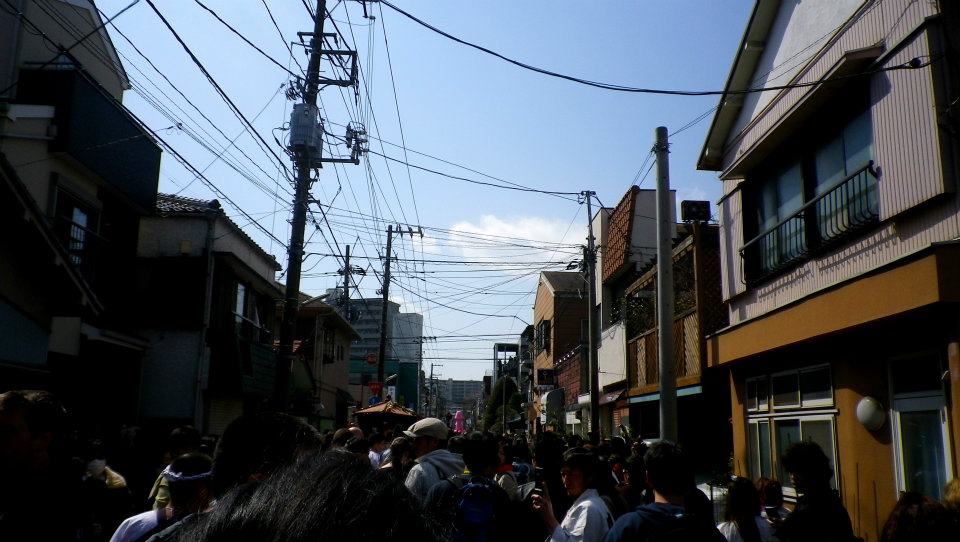


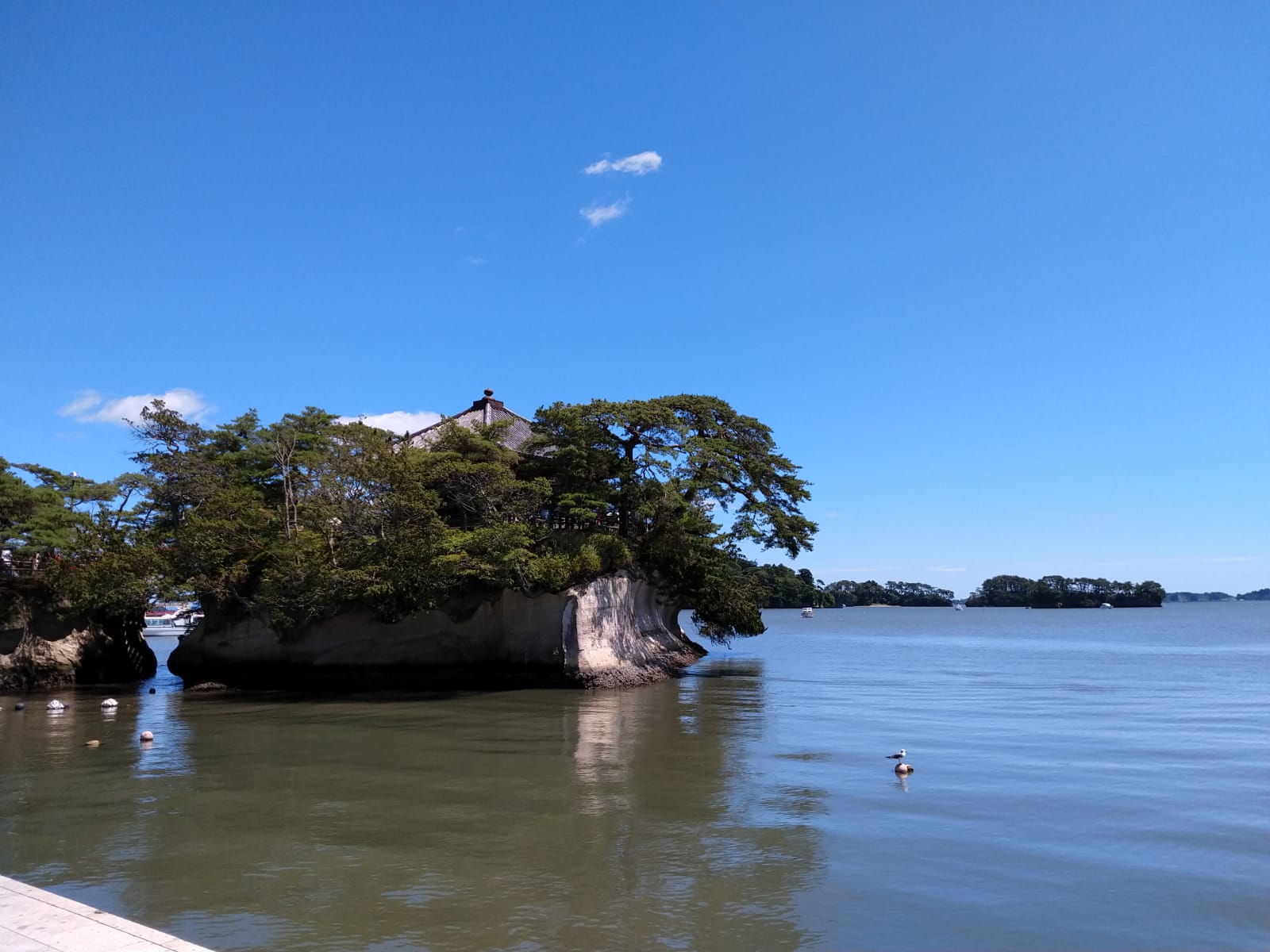
 (better not to go in weekends or summer because of the amount of tourists) is more than enough to see the area and it also doesn't have to be expensive. There are quite some options for cruises (around 1500-2000 yen) by which you can see many of the islands instead of just the ones near the bay. Some of these cruises take you further than other ones and last between around 20 minutes and one hour. I haven't done a cruise, so to know more about this you'd have to figure it out by yourself, but I've had a really nice day just walking around and swimming on one of the islands.
(better not to go in weekends or summer because of the amount of tourists) is more than enough to see the area and it also doesn't have to be expensive. There are quite some options for cruises (around 1500-2000 yen) by which you can see many of the islands instead of just the ones near the bay. Some of these cruises take you further than other ones and last between around 20 minutes and one hour. I haven't done a cruise, so to know more about this you'd have to figure it out by yourself, but I've had a really nice day just walking around and swimming on one of the islands. 